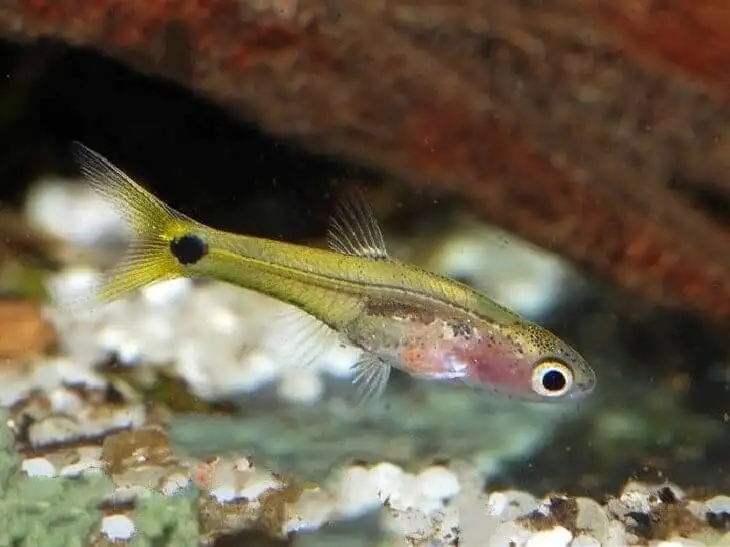Barboides gracilis

Barboides gracilis naturally inhabits water bodies in West and Central Africa. The fish can be found in small streams and rivers that run through the rainforest. The water in these areas is clear with a brownish colouration, which is caused by tree leaves, branches and snags decomposing on the bottom. The fish are small and are excellent candidates for keeping in a nano aquarium.
The body of the Barboides gracilis is almost transparent. The head and front part of the body are pinkish. At the base of the tail plumage there is a dark spot. Males are more brightly colored and noticeably slimmer than females, and these differences are even more noticeable during the spawning period. The maximum size of the fish is 1.8 cm.
This is a gregarious fish and should ideally be kept in a group of at least 20-30 specimens. Keeping fish in such a flock makes them less fearful, and the males will exhibit interesting behavior in competition with each other for the attention of females.
Keep Barboides gracilis can be in a small aquarium volume of 20 liters, densely planted with various plants.
Filtration should not be too strong, because in nature, fish live in places with standing or slow-flowing water.
Preferably use sand as substrate. Several snags and tree branches can be placed so that you can create shady spots near the bottom, where the fish spend most of their time. If you cannot find suitable snags, you can use thick beech or oak branches which have been boiled and stripped of their bark.
Adding dried beech, oak or almond leaves to the bottom will bring the aquarium conditions even closer to natural ones. Furthermore, the decomposing process will support colonies of micro organisms, which provide good supplementary food for the fry. Leaves can remain on the bottom until they are completely decomposed, or they can be replaced every 3-4 weeks.
Water parameters: temperature 21-26° C, hardness dH 0-6°, pH 6,0-7,0. Do not introduce fish into an aquarium where biological equilibrium has not yet been established. Replace 1/5 of the aquarium water weekly with fresh water.
In order to mimic the conditions to which Barboides gracilis are accustomed in nature, it is necessary to apply low light. Many plant species cannot thrive in these conditions, so select shade-tolerant species.
The menus of the fish in nature consist of small crustaceans, worms, larvae and zooplankton. In an aquarium, the fish are fed with a variety of dry food, as well as live and frozen daphnia, artemia and chopped chironomid. Feed the fish twice a day.
Reproduction
Under aquarium conditions Barboides gracilis do not breed. The difficulty in breeding these fish is their tiny size. If favorable aquarium conditions are created, spawning can be achieved, but it is very difficult to raise microscopic fry. Immediately after birth, the fry are presented to themselves, and the adult fish immediately start hunting them, which further reduces the chances of the fry surviving.
Life expectancy for Barboides gracilis under aquarium conditions is about 1.5 years.









